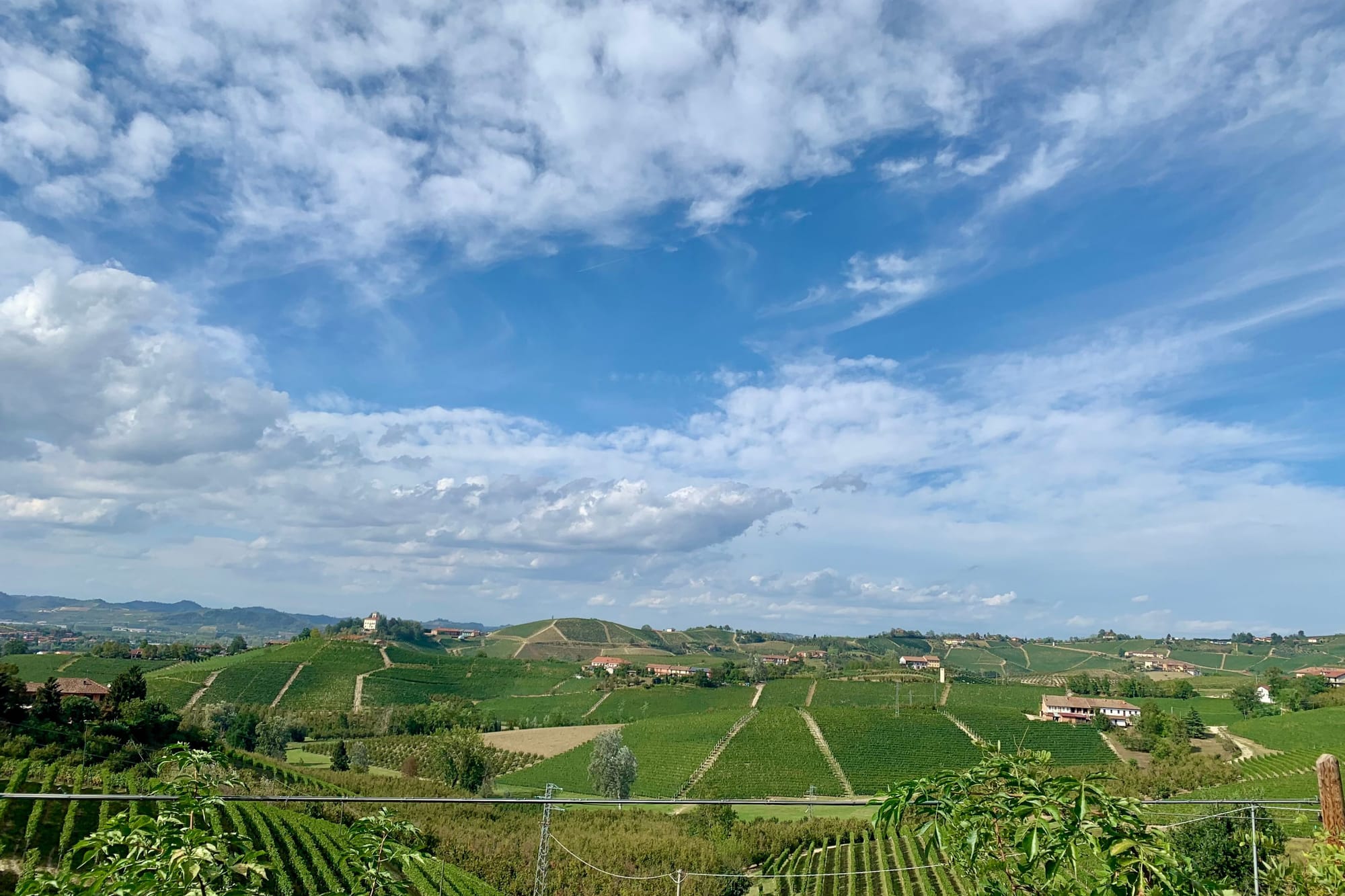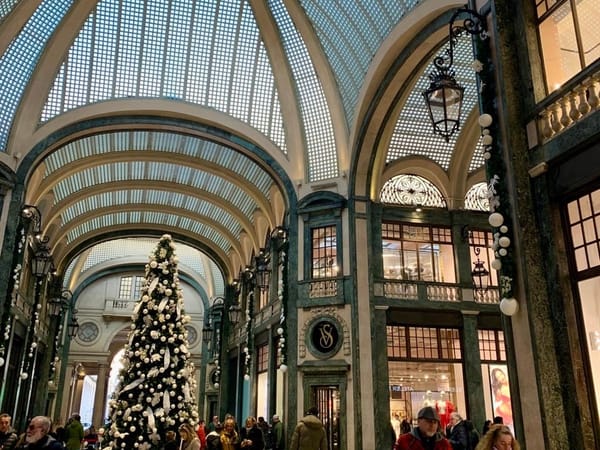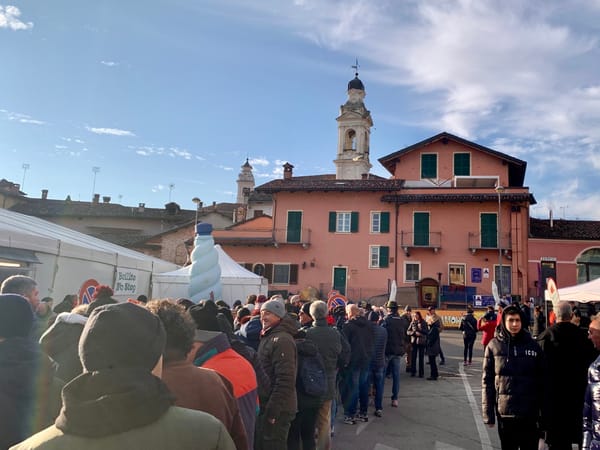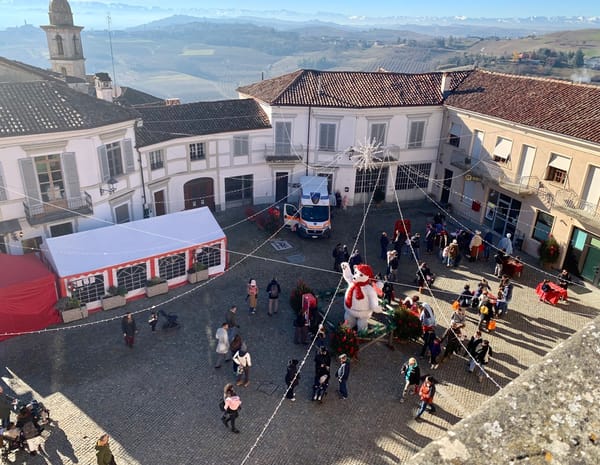Why You Should Visit Piedmont (before Everyone Else Does)
Discover world-class wines, white truffles, Michelin dining, vineyards, and mountain views—before the rest of the world finds out.

I’ve been visiting Piemonte—or Piedmont in English—several times a year since 2017, and each trip leaves me a little more under its spell. In that time, I’ve seen it shift from a quiet, exclusive corner of Italy’s tourism map, through the uncertainty of the pandemic, to a region confidently stepping into the spotlight.
Tucked into the northwest of the country, between France and Switzerland, Piedmont—literally “at the foot of the mountain”—boasts elegant cities, mist-shrouded hills, Italy’s most prestigious wines (Barolo and Barbaresco), a constellation of Michelin-starred restaurants, and views of the Alps at every turn.
It’s also the birthplace of the Slow Food movement, and tradition, sustainability, and pleasure are woven into daily life. This mindset has nurtured a wave of new luxury resorts, design-led agriturismi, and eco-conscious wine estates emerging all over the region.
In this guide, I’ll reveal why now is the time to visit—as well as when to go, what to do, and where to stay—before the rest of the world catches on.
Some say Piedmont is "the new Tuscany". Here's my take on how the two regions compare.
The Flavours of Piedmont: Traditional Food and Must-Try Dishes
If you ask locals what makes Piedmont special, many will point to the food. As the birthplace of the Slow Food Movement, the region’s cuisine is rooted in tradition, seasonality, and ingredients drawn from its alpine pastures and fertile plains.
Here are a few dishes you shouldn’t miss:
- Vitello tonnato—thinly sliced veal in a creamy tuna sauce, a Piedmontese classic often served as an antipasto.
- Tajarin—golden egg pasta (like fine tagliatelle), best with butter and sage or topped with Alba’s white truffles.
- Agnolotti al plin—small ravioli pinched shut (“plin”) and filled with meat or vegetables.
- Bagna cauda—a hot dip made with anchovies, garlic, and olive oil, served with seasonal vegetables.
- Fritto misto—a quirky local speciality: vegetables, meats, even fruit and sweets, all lightly battered and fried.
- Carne cruda all'Albese—raw, thinly sliced veal topped with olive oil, Parmesan shavings, arugula (rocket), and sometimes truffle.
Vegetarian and visiting Piedmont? Don't panic—this guide has you covered.
Piedmont is also a cheese lover's paradise, home to celebrated cheeses like Castelmagno (crumbly and savoury), toma (soft and tangy), and brus (aged toma with a tangy bite).
And for dessert? Don’t miss bonet—a chocolate–amaretti custard—gianduiotti hazelnut chocolates, or torta di nocciole, a flourless hazelnut cake from the Langhe hills.
Want the full list of traditional dishes, plus tips on where to try them? Read my food lover’s guide to Piedmont.
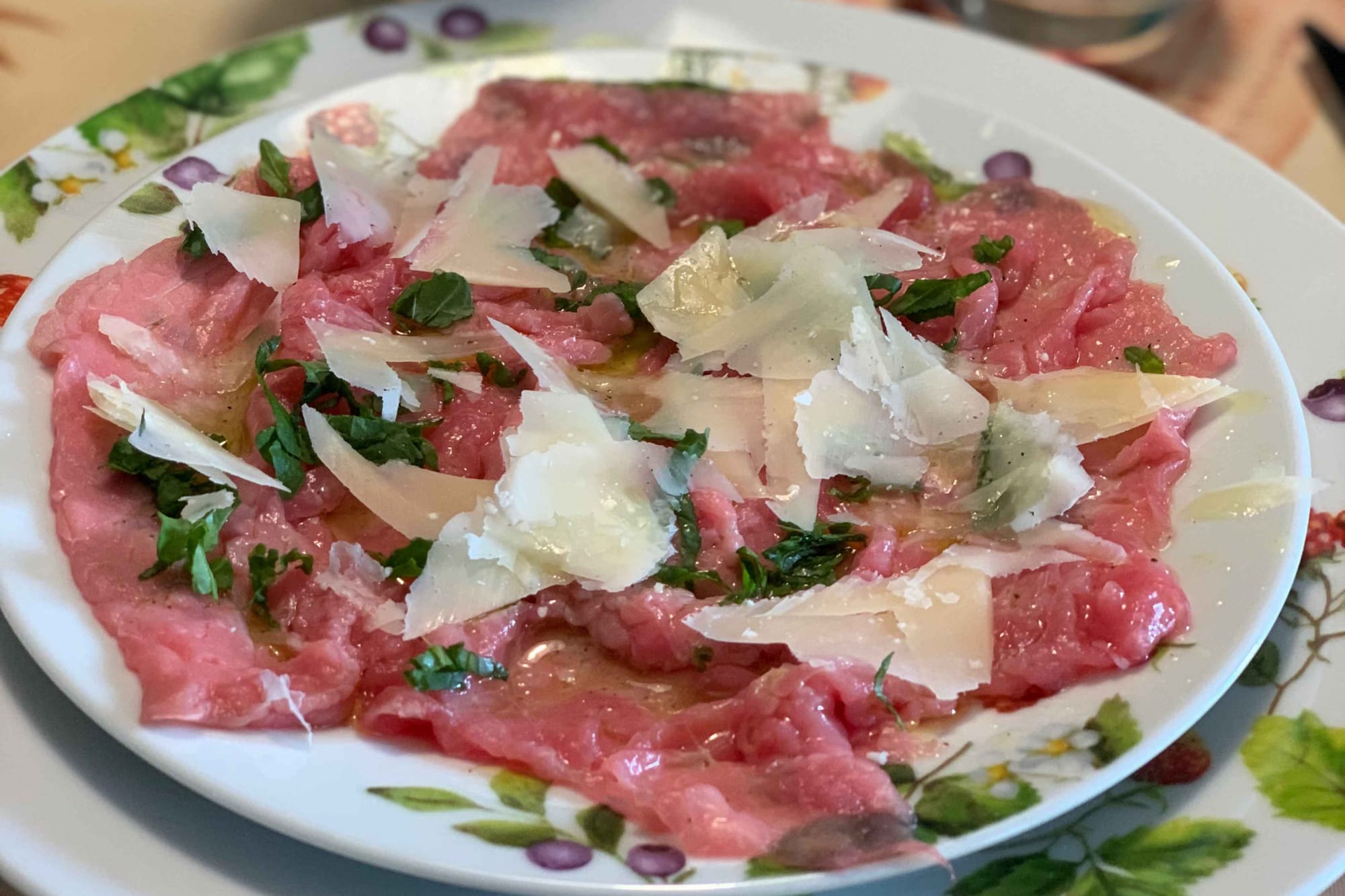
The Wines of Piedmont: From Barolo to Arneis
No trip to Piedmont is complete without a glass of local vino. Often called the “Burgundy of Italy” for its family-run estates and single-grape, terroir-driven philosophy, this region produces some of the country’s most prestigious bottles—as well as humble table wines you’ll find at family lunches.
Here’s a breakdown of the wines you're most likely to encounter:
- Barolo & Barbaresco—full-bodied reds made with Nebbiolo grapes known for their power and ageing potential. Perfect with rich, meat-based dishes.
- Barbera, Dolcetto, & Nebbiolo Langhe—the everyday reds, softer and fruitier, often poured at festivals and Sunday lunches.
- Arneis, Favorita & Gavi—crisp, refreshing whites that pair well with pasta, cheese, and seafood.
- Moscato d’Asti—lightly sparkling and sweet, ideal with desserts like bonet or hazelnut cake.
- Vermouth—Turin is the birthplace of this aromatised wine, which inspired Italy’s aperitivo culture and cocktails like the Negroni.
The Piedmontese mentality is all about preserving tradition while respecting the land, and in recent years, many wineries have embraced organic and biodynamic practices, energy-efficient cellars and regenerative farming techniques—so you can sip while preserving land and culture.
Curious about grapes, pairings, and where to taste them? Read my beginner’s guide to Piedmont wines.
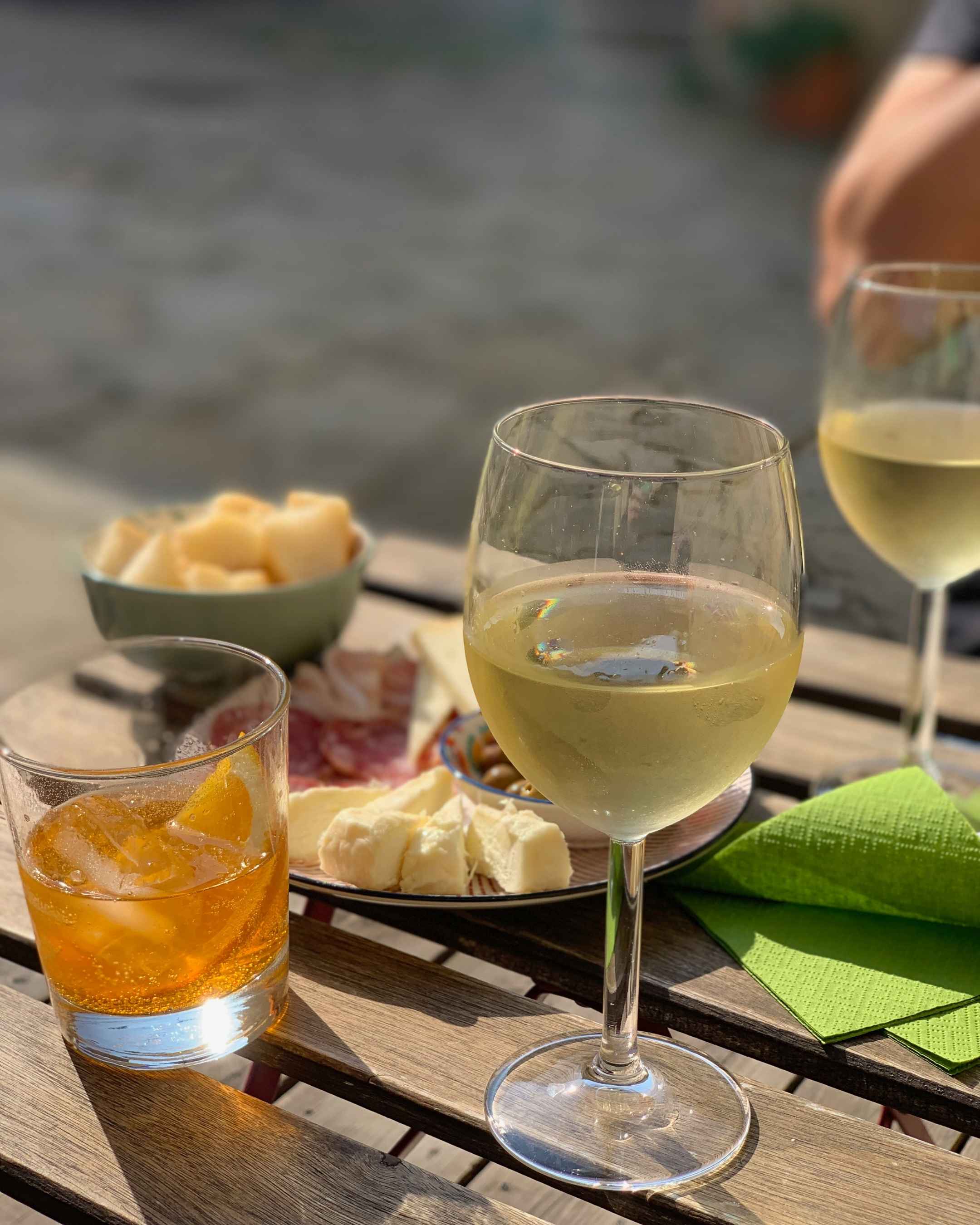
When to Visit Piedmont: Best Seasons for Food, Wine, and Culture
Unlike much of Italy, Piedmont’s peak season isn’t summer—it’s autumn, when the vineyards turn red and gold, and Alba’s famous truffle fair attracts foodies from around the world.
That said, Piedmont is a year-round destination, and each season has its own appeal.
- Spring—Fresh produce like asparagus and strawberries come into season, and wineries are quiet. It’s a great time for hiking, photography, and vineyard visits.
- Summer—Expect lively festivals, al fresco dining, summer fruits, and hazelnuts—though many restaurants and shops close for part of August.
- Autumn—The highlight of the year: grape harvests, harvest festivals, and the International Alba White Truffle Fair (Oct–Dec). As it's Piedmont’s busiest season, booking accommodation, winery tours, and truffle experiences well in advance is essential. If you’re visiting in October or November, this packing list will help you prepare for changeable weather.
- Winter—Crisp and atmospheric, with skiing in the Alps, cosy wine cellars, Christmas markets, and comfort food like bagna cauda and polenta con cinghiale.
Find out when Piedmont will feel just right for you—explore the best seasons to visit, based on what you love most—food, wine, culture, or nature.
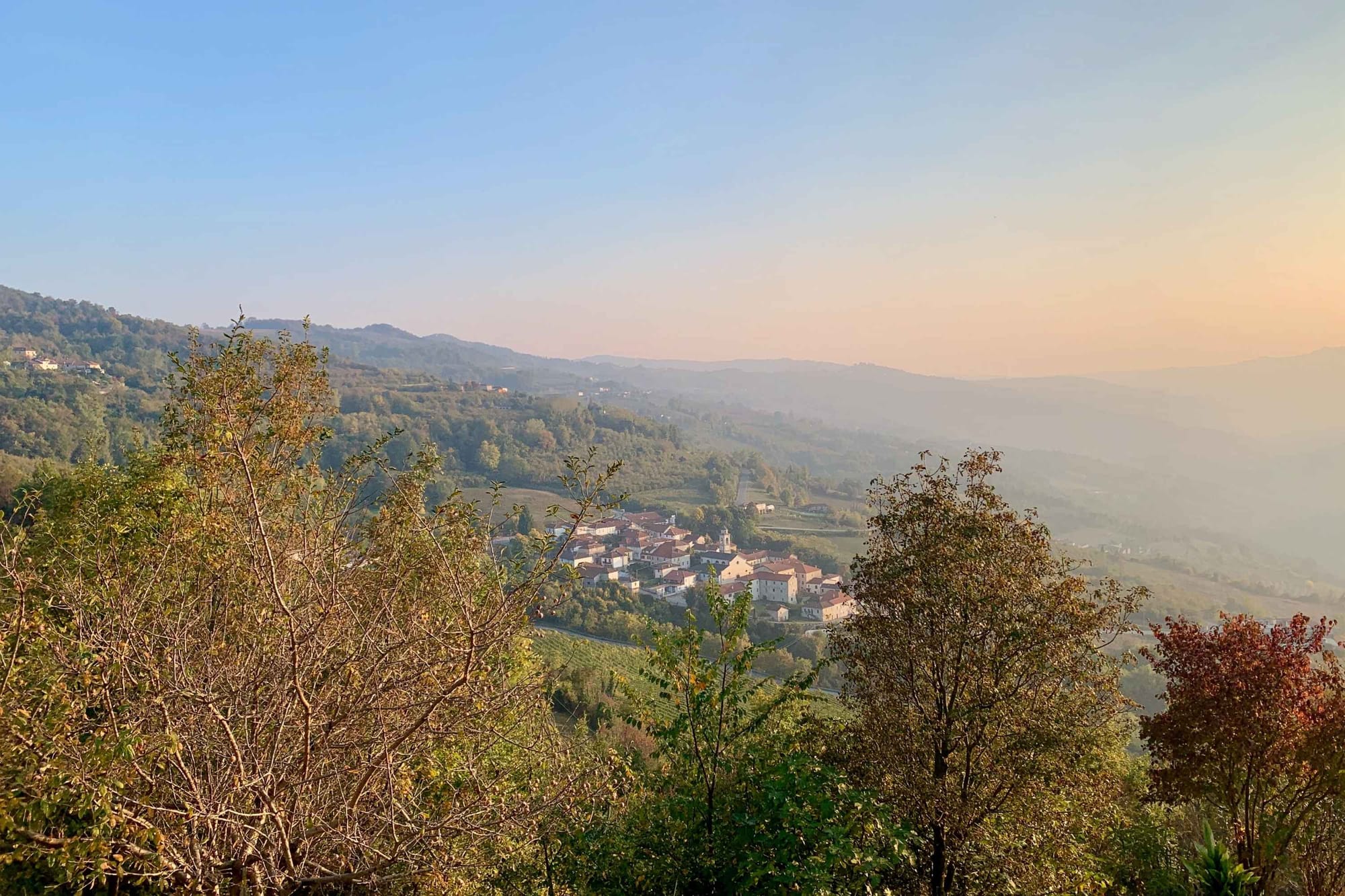
Food & Wine Festivals in Piedmont
Piedmont is a paradise for food lovers, and planning your trip around its many food and wine festivals adds a delicious layer to any visit.
The region's most famous harvest festival is truffle festival in Alba—held every year from October to December, with the truffle auction in November—but its culinary calendar offers much more.
From the artisanal cheeses at Bra's Cheese! festival and chocolate paradise at Turin's CioccolaTò to wine celebrations like Barbaresco in Tavola and Dolcetto Summer Fest—Piedmont offers something to suit every taste.
For an authentic local experience, head to Asti for the Festival delle Sagre, which celebrates traditional food and local folklore.
Taste your way through the year—explore Piedmont’s food and wine festivals and plan your trip around the region’s rich culinary calendar.
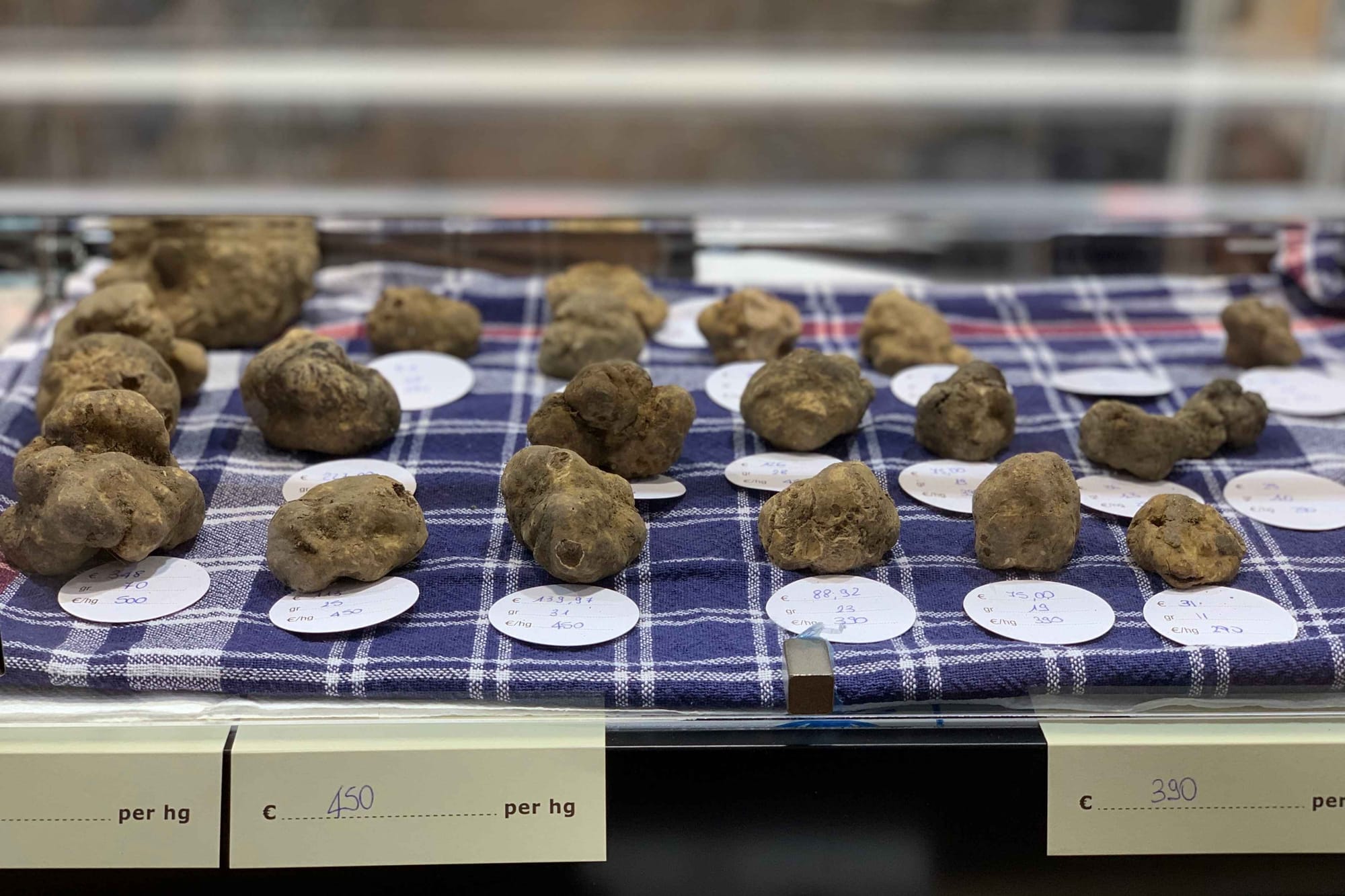
Best Things to Do in Piedmont
Beyond its celebrated wine and cuisine, Piedmont offers experiences that bring you closer to the land and its people.
Whether walking through vineyards with local winemakers or following truffle dogs into the woods, these activities immerse you in the region’s rich culture and traditions:
- Vineyard tours & tastings—Sip Barolo straight from boutique producers on private tours with winemakers.
- Cooking with the masters—Roll tajarin and agnolotti al plin after a market stroll for seasonal ingredients.
- Truffle hunts—Join expert trifulau and their dogs in search of elusive white and black truffles.
- Hot air balloon flights—Float over the Langhe hills at sunrise for unforgettable panoramic views.
- E-bike wine adventures—Glide through vineyards and hilltop villages, pausing for tastings of Piedmont’s finest.
- Slow food & artisan markets—Meet local producers in Bra and Pollenzo, birthplace of the Slow Food movement.
- Private lake excursions—Cruise to Isola San Giulio or the Borromean Islands for serene vistas and historic charm.
- Visit the Big Benches—There are hundreds of these beloved art installations scattered across the hills.
Get the full lowdown on the best things to do in Piedmont—for foodies, wine lovers, culture nerds, and nature lovers.
Where to Stay in Piedmont
Piedmont is one of Italy's leading regions for sustainable luxury tourism, blending its regal heritage and high-end cuisine with a commitment to preserving both land and culture.
In response to rising global demand for eco-luxury experiences, the region has seen a surge of luxury sustainable hotels, eco-resorts, and design-led agriturismi.
Visiting Piedmont wine country? Here are the 10 best luxury hotels near Alba.
How to Get to and Around Piedmont
Getting to Piedmont is straightforward, with Turin-Caselle Airport well connected to major European hubs, and high-speed trains linking Turin with cities like Milan, Rome, Paris, and Geneva. Once in the region, your transport choices depend on your itinerary.
City breaks in Turin or visits to the lakes are possible without a car, thanks to reliable public transport and taxis. Trains also connect towns like Alba, Asti, Bra, Cuneo, Novara, and Vercelli to Turin, making short hops convenient.
For exploring wine country, however, a car or guided tour is recommended, as local buses are infrequent. Alternatively, hire an e-bike in Alba to explore the scenic hills of Langhe, Roero, and Monferrato at your own pace.
If you're truly committed to reducing your carbon footprint, consider joining MaaS Piemonte. This scheme aims to make sustainable travel possible in Piedmont by integrating public transport, ride sharing, and shared mobility into a single app.
Now in its second phase, new users receive a €20 welcome bonus and up to 50% cashback.
For details on airports, trains, and driving routes, read my complete guide to getting around Piedmont.
Essential Travel Tips for Visiting Piedmont
- Local language: Italian is widely spoken, but you'll also hear piemontèis (Piedmontese language) in the villages. A few basic phrases and polite greetings (buongiorno, buonasera) will get you a long way.
- Currency, cash & cards: The local currency is Euros (€). Credit cards work in towns; cash is essential for markets, trattorie, and small wineries.
- Lunch and dinner times: Lunch runs 12:30–15:30; dinner starts around 19:30. Plan snacks if you eat early.
- Wine tasting etiquette: Book ahead for intimate, guided experiences. Buying a bottle supports local estates.
- Tipping: Coperto covers the basics; small change is always appreciated.
- Getting around: Trains link the main towns, but wine country is best explored by car or e-bike. Hilly routes take time—plan accordingly.
- When to visit: Autumn for truffles and harvests, spring for quiet vineyards and mild weather, summer for summer festivals, winter for Alpine escapes.
- Booking in advance: Top restaurants, winery tours, and truffle hunts fill up fast—secure your spots early.
Piedmont remains one of Italy's lesser-known regions. Here are five things you might not know about it.
Make Piedmont Your Next Slow Travel Destination
This post has been my love letter to Piedmont, and I hope it’s sparked your curiosity to experience this region for yourself—before the rest of the world finds out about it.
From Barolo vineyards to Alpine lakes, Piedmont has so much to offer both first-time and return visitors—you could spend a lifetime getting to know its people, culture, and geography.
Read why I think Piedmont makes the perfect Slow Travel destination.


